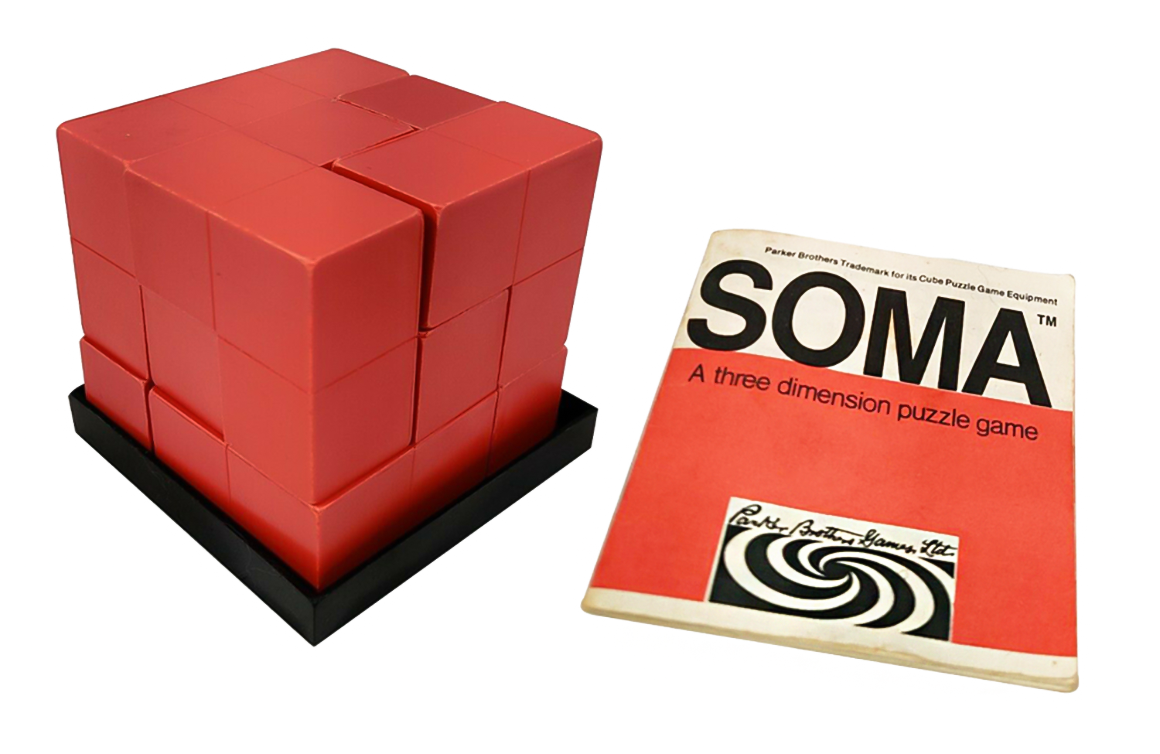“The World’s Finest Cube Puzzle Game!”
With this lofty claim, Parker Brothers released their version of the SOMA cube in 1969. Available in four different colours (orange, blue white, and red), the puzzle consisted of seven unique, irregularly shaped plastic pieces and challenged players to take the cube apart and then try to restore it into its original 3-inch x 3-inch x 3-inch cubic form.
Like many puzzles of its ilk, the method to successfully re-assemble a SOMA cube is based on science; specifically, a geometrical theorem from Denmark inventor and mathematician, Piet Hein. In theory, Hein’s invention could be assembled in more than a million different ways – 1,105,920 to be precise – a number that Parker Brothers touted on its packaging for the puzzle. But, after accounting for each piece’s various rotations and reflections, the number of genuinely unique assembly options is 240.
The appealing mental challenge of the SOMA cube lies in its contradiction: while re-assembling the cube appears to be an easy task, in reality, the undertaking is complex. The unexpected challenge led to sales success for Parker Brothers and even saw the SOMA cube pop up in classroom curricula and psychological tests.
Parker Brothers included a small booklet, written by Hein, about the SOMA cube in each set. In addition to providing tips and background on the puzzle, Hein also outlined other shapes that could be assembled and added suggestions on how two SOMAs could be combined and turned into a competitive game.
Note: If you buy something using the eBay link in this story, we may earn a small commission. Thank you for supporting independent toy journalism!

